Our extra-large special edition is here. Subscribe today and receive the 25% longer issue at no extra cost!
Masahiro Sakurai's Super Smash Bros. Diaries
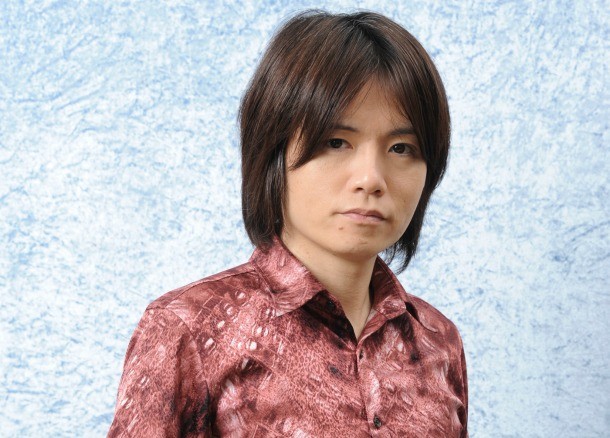
Late last year, Smash Bros. director Masahiro Sakurai wrote several editorials about the development behind his Wii U and 3DS fighting game series for Game Informer Magazine and Digital. Rather than having to dig through the magazines to find each one of Sakurai's pieces, we've included all of them in this story. They are listed in chronological order, starting with his first piece that ran in Game Informer issue 256 and ending with an interview in which he answers our questions about the Smash Bros. series.
Each of Sakurai's editorials dive deep into the development of the games. He phrases his points in the form of questions that were frequently asked by fans of the games. Along with his insight, he provided images that show off some of the development techniques he used, such as using action figures to frame animations. He also snapped a photo of his desk.
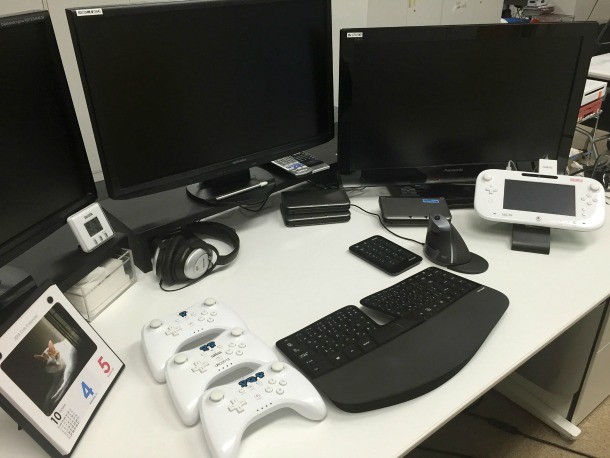
Without further delay, here's Sakurai:
Hello to all Game Informer readers! My name is Masahiro Sakurai, and I'm the director of the Smash Bros. series. For more than 10 years, I've been writing a regular column for Weekly Famitsu, the biggest game magazine in Japan. Now, for a few months, I’ll be doing the same thing for Game Informer.
I'm sure most of you are reading this because you're interested in hearing about Smash Bros., so let's kick off by answering a few of the questions I'm being asked frequently.
Why the dual-platform release?
The first reason is that I think both portables and home consoles have their own traits that make them fun. I’ve gone into that in previous interviews, so I’ll omit the details here.
One big reason for this approach is because I’m a freelance game designer, one without his own permanent team or company. I’m always going to be at the center of any Smash Bros. project, but since I don’t have my own personal studio, the staff changes in and out with each project. For this one, I’m working with Bandai Namco Games. Changing development studios like this also means that you can’t build out from the know-how and in-house assets you’ve accumulated over time.
As a development environment, it’s different from a publisher that can work on fighting games, shooters, and open-world titles all at once. For us, even if things look the same, it’s all completely different, completely built from scratch. If we started with a console project then moved on to the portable platform, once one team finished up their work, we’d have to wait and hand everything over to another team. In other words, working on both at the same time is what finally allows us to provide the game on both platforms. The fact is, no matter who I’m working with, I need the ability to get things right as we go along.
Why were the two titles developed on two different timeframes?
The biggest reason was so we could keep the debug schedules separate from each other. Debugging a game this size is a major project involving hundreds of people, and since the two platforms offer pretty different content, we wanted to avoid conflicts during the debug stages. If we were hell-bent on a simultaneous day-and-date release, we would have wrapped up one title, put it on the back burner, and launched both games in 2015. But I doubt most people would prefer that.
We also have to consider different markets around the world when settling upon a release date. The 3DS version is launching on different dates in Japan and North America, but both versions actually went gold on pretty much the same day.
Where is [insert character here]?
I know that no matter how hard we work to get lots of fighters in the game, there are always going to be people who only wonder about the characters that aren’t there.
Among them are the Ice Climbers, who were actually in a working stage in the Wii U version during development. However, getting the two of them moving as a pair in the Nintendo 3DS version took a ton of machine power. I had the team innovate a lot to try and get them working, but we had to give up eventually. In fact, also with some of the other fighters we had to keep modifying and modifying until they finally worked.
When it comes to characters and series without any future plans – that is, without the prospect for new games to come out soon – those are always going to be a lower priority. As for porting characters from Melee, the original data is now old enough that it’s no longer a simple, straightforward process.
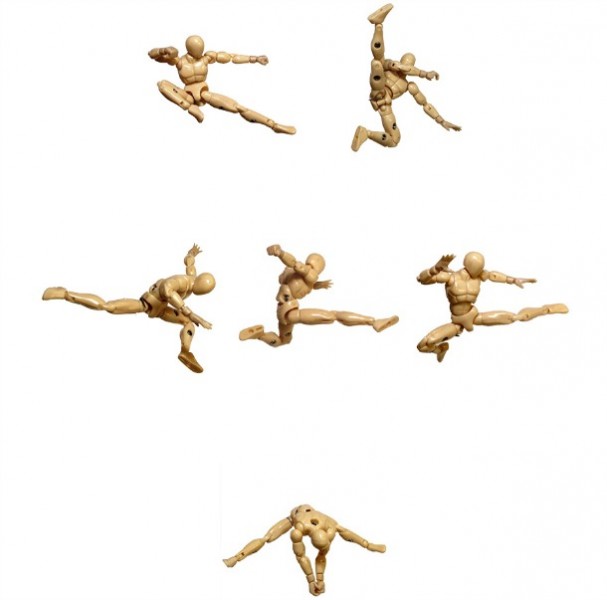
What kind of process do you go through, from the ideas behind each move to the final balancing?
First, I decide on a fighter, visualize their moves, snap poses using action figures, and bring that over to the spec crew as I work on frame timings. The general stats for moves – their speed, reach, and other traits – are more-or-less decided by this point. I then give instructions to the motion designers, and once they bring back animation for me, I directly program attack hit boxes and such.
Once a fighter is playable to some extent, I unleash them on the test players. We have around 12 of these players, and I have them play both two and four-player matches and get back to me on win/loss records and which moves seemed particularly strong or weak. That forms the basis for the long fine-tuning process.
This work takes a tremendous amount of time and energy out of me, and it’s something I wouldn’t mind leaving to others, but that has never worked well in the past. Even trying to oversee this much work already goes beyond a typical director’s workload, but I’m piling even more on top of that, as well. All I can do is try to play catch-up on my off days. However, it’s exactly this type of structure, with the director overseeing everything from the idea process to completion, which creates the consistency you see. We’re never straying from our goals.
Speaking of which, if I took all of the battle records and tester feedback at face value and tried to make the game balance completely average and fair, that would make the game boring in some ways. Even if the balance is rough in spots, it’s fun if it offers you a wide dynamic range to work with. That’s something I hope we don't forget as we keep going.
One more thing before I wrap up. I’m active on Twitter [@Sora_Sakurai], but that service is meant to be Japan-only. If you have a message you’re burning to send me, I would request that you not use an auto-translate service. English is honestly easier to read than that. Also keep in mind that, just as with Japanese, I’m not able to answer any questions that I receive over social networks – sorry!
See you next month.
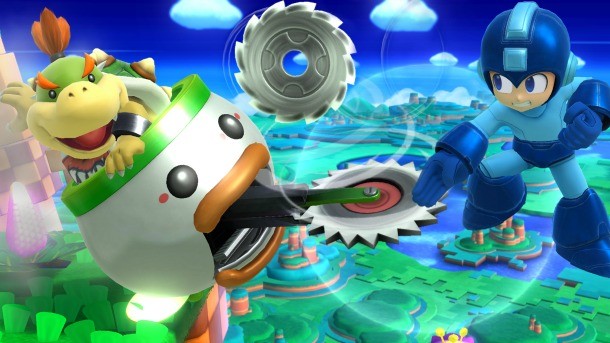
This article originally ran in Game informer issue 260
Welcome back, everyone. A lot has happened since the last time we talked here. Most obvious, of course, was the launch of Smash Bros. for Nintendo 3DS. I just want to say thanks, because the reception you’ve given it really makes me feel like all the hard work was worth it. Next up is the launch of Smash Bros. for Wii U. With one game out and one to go, the questions keep coming, so let’s get to them…
Last month you touched on character creation. Could you share more insight into how you go about selecting characters?
The process is pretty well set. We survey character popularity and such, both in Japan and worldwide. And there's research into games currently in development that might provide new characters. But in the end, the decisions are made by me alone, because I need to consider things like development time and so forth.
Selections are made using a wide number of factors. I consider whether a character has unique characteristics, and whether these characteristics inspire ideas that can be used to make Super Smash Bros. more fun. I also look at the prominence of the character, and if there’s a chance that character overlaps with another. I also look ahead to see if there are promising-looking characters from other games that are still in the early stages of development.
With all of that in mind, characters with no future – in other words, ones from series with little chance of a new release going forward – are difficult to justify unless thereʼs some special aim I have in mind. This doesn't apply for alternate costumes or models for existing characters, though.
To put it simply, if I firmly believe a character can work, then I'm open to anything. But even if a character can stand by itself, if it overlaps with another character or doesnʼt create any new uniqueness as a fighter, I canʼt implement that.
You’ve talked about how you select characters, but why does the roster continue to expand with each release?
For every Smash project, as I’m working on it, I always think to myself, “This is it – the last Smash Bros.!” Of course, after the original game and Super Smash Bros. Melee, the Wii and Nintendo 3DS entries came out anyway, which makes it a bit difficult to deny the possibility of future games. The point I’m trying to make here is that I throw my body and soul into every project with the mindset that this is the last one. As a result, there have been a lot of new characters and features added. Itʼs to the point where itʼs almost an impossible quantity to work with – this lineup of polished characters, each with such a litany of things to implement.
The characters get remade every game since we keep switching development studios. And since it takes work to give characters a wide dynamic range while still sticking to their backstories, this leads to more development cost per character. I think, for most games, just having a few new characters would be all one could expect.
In a word, itʼs relentless. Right now, I have no way to picture whether things will go as well next time.
Why are my 3DS matches running really slowly?
This issue is one I canʼt comment about specifically, since network speeds and stability can vary so widely from place to place. We tested out the game in assorted environments, places where youʼd expect to play comfortably using some outside connection.
During a match, the game simply connects both players and sends small amounts of data between them, so if it's running slowly, thatʼs a problem with network speeds. If you start a match on a slow network, itʼll be just as slow for your opponent as well, so Iʼd advise playing on as clear a network as possible for both of your sakes.
The 3DS relies on Wi-Fi, so even if your home has a great net connection, it wonʼt work as well if the signal is weak from the 3DS to the Wi-Fi router or something is interfering with it. Iʼd also advise against playing while streaming something else off the net or using a tethered connection. Free hotspots might not be very well suited for gameplay, either.
Matching, of course, is nicely set up so that you can connect to other players physically near you.
What features can we expect in the Wii U version?
The Wii U version of Smash will have new stages and additional game modes. There also may be a few things you weren’t expecting. There's a video on the official site called "Super Smash Bros. for Wii U: 50-Fact Extravaganza.” Give it a view and you'll get to see how awesome it is for yourself.
Thatʼs all for now. See you next month.
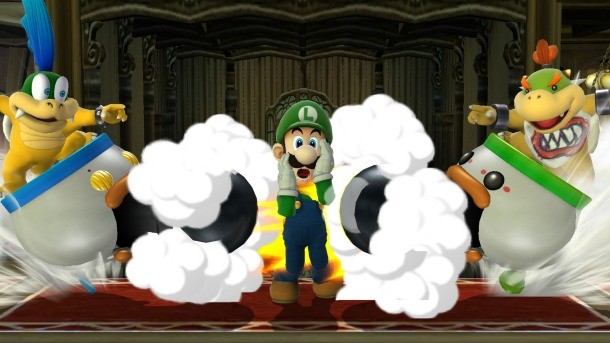
This article originally ran in Game informer issue 261
How are things now that development is over?
Actually, I think you could call it a pretty unique situation. Having the Wii U version go gold right after the Nintendo 3DS version, one would think the work would get easier, since the fighter balancing was already complete…but that’s not exactly the case.
We released the “Smash Bros. for Wii U 50-Fact Extravaganza” video a bit ago, and the fact is, there’s so much material in this game that we had no problem filling up that video – even without covering the fighters, stages, or items. We’ve been continually working on the Wii U game even through the 3DS project, of course, but in the end, development was especially difficult.
Our goal was to have it so anyone could pick up the game and have fun in a short period of time, but if you’re the ones making the game, it’s not so easy for you. It felt like, after we managed to stagger past one goal we had for ourselves, there was another goal further away we then had to sprint for.
We’re running into the same experience with Mewtwo development, even after the Wii U version wrapped up. I’m finding it very rough going, to be frank, so I don’t feel like development is over at all.
How did the eight-player mode come about?
Eight-player fighting was actually something first written into the design document for Super Smash Bros. Melee. We weren’t able to overcome the issues involved then, though, technical and otherwise. This time, however, we were finally able to get it working on a limited basis.
Getting up to eight people in a match expands the possibilities for multiplayer, of course, but also makes Team Battles and things like Classic mode and event matches in single-player take on new dimensions. You may not have the opportunity to assemble eight people together at once too often, but I hope you’ll give it a try.
What was the thinking behind Smash Tour?
The more deeply people play Smash Bros., the more they start seeking higher levels of precision in the gameplay. At the end, this leads them to prefer the Final Destination Stage with no obstacles, no items, certain stock settings, etc. We did try to make this game so you can play it any way you like along these lines, but that approach does veer a little from the original intention of the design.
Smash Tour is the result of us pressing forward in our original direction – having a lot of changing elements in the field, leading to totally unpredictable situations. Our inspiration here wasn’t to copy the board game format, and the rules don’t follow those lines; the gameplay is designed with Smash Bros. in mind.
It’s set up so all sorts of things can happen in a short time, making it impossible to guess who will win. It’s a very Smash Bros.-like approach, and while it can be unfair at times (like any board game), it’s built for people who can laugh all of that off as they enjoy the experi ence. I’d like you to gather your Smash Bros. pals together and try the mode out, maybe playing three games to start.
We engage in multiplayer during our lunch breaks, and these days we play Smash Tour mode every time. It’s fun, in part because it’s okay to an extent if the players involved vary widely in skill.
What elements of the game stick out to you?
The game is packed with a wide variety of elements, far more than I could ever completely cover here. There’s the Amiibo support, Stage Builder, My Music, the Mii fighters, the Photo Studio, Masterpieces, the Stadium mode, online play, support for a multitude of controller options…I could talk about each one, but there’s not enough space to go in-depth about them all.
Still, looking back, I think to myself “I’m amazed we created all this.” Just test-playing all this stuff took a pretty hefty chunk of time.
Will there be another Smash Bros.?
I can’t positively declare there won’t be. With both Melee and Brawl, I made those games with the thought that there wouldn’t be any more sequels. Thus, I really can’t deny the chance for another. However, as for myself, I don’t think there will be.
Our intention here was to provide extra merits to the game which go far beyond the sale price. In terms of scope, and in terms of sheer number of characters, we went beyond our limits long ago. And yet, if we cut the number of fighters or modes in a future game, I’m sure there would be complaints.
You could say that all the effort in the past to stretch out, keep pushing myself, and provide all these extra merits wound up tightening the noose around my neck in the future. That may seem like it contradicts my personal desire to keep giving gamers as much as I can, but I don’t see any easy answer for it. And yet, despite that, I also have trouble picturing someone else taking my place and providing all this value-added content without me.
I feel like we’ve arrived at a very difficult place. One thing I can say, however, is that I hope people don’t think that Smash Bros. has come to its natural conclusion as a matter of course. That’s my personal plea.
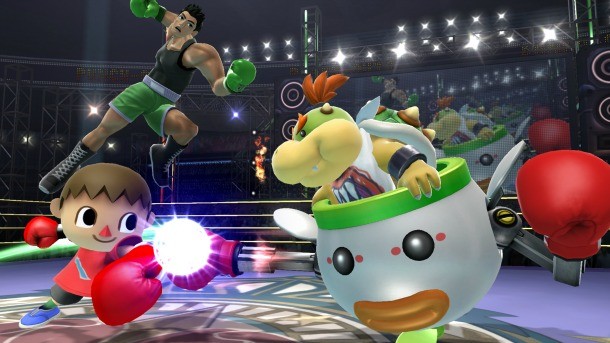
This article originally ran in Game informer issue 262
Over the past few months, game director Masahiro Sakurai talked extensively about the development process behind the new Smash Bros. games. For our final look at these games, he answered our questions, giving insight into the inclusion of Amiibos and why the series dives deep into Nintendo’s past.
Did you have time to incorporate any subtle balance changes based on the feedback of the 3DS version into the Wii U version?
“Feedback” wouldn’t be the exact term I’d use, but given that that the release dates were staggered, we naturally had the time to make some adjustments. We’ve applied a balancing patch to the 3DS version, and that was also applied simultaneously to the Wii U game. The aim here was to allow gamers to play with these balance settings on the day and date of the Wii U release.
Being able to patch the game this time around allows us to adjust the balance anytime we want. However, if we took the balance feedback we pick up from online stats and certain hardcore fans at face value, that could make the game less fun and/or destroy the balance. We attempt to maintain a wide dynamic range with the balance, so I feel like we need to watch that we don’t over-adjust in a negative direction, like cutting down abilities or trying to have all characters playable on an equal basis. Having everything be totally fair would boost the competitive aspect, but runs the chance of it no longer being about playing a game. Mediocrity would be the worst thing for this.
What’s the process like for determining what stages to bring back from previous games?
There’re two versions of the game and each one offers different stages; it’d be impossible to create completely original world settings for each one. So one or the other might be a stage ported from the previous game, and the choices are made based on a variety of balance decisions – the popularity of the stage, whether or not it’s a match for the 3DS screen, and whether or not two stages from the same setting are getting ported (for example, if two different Mario-themed stages are ports on both the 3DS and Wii U version).
Why did the team decide to include two versions of Pit instead of using a color swap?
Allow me to explain a bit about clone type fighters.
In the beginning, I didn’t plan to make any of them as separate character variations (clones), but rather as color variations like Alph or Little Mac. This was even if we were going to use different voices for them. However, any character that gained some uniqueness through their balancing needed to be separated so their results and statistics could be counted properly. It wouldn’t have been fair to have the results counted together even though their strengths differ between the variations.
Lucina was the first to be split off; this is because we made Marth’s moves more standard so he could be easy to handle by novice players.
Dr. Mario already had a clear uniqueness, so by letting this character throw the fireball in his Dr. Mario costume or by cutting out his clear uniqueness that was established in Super Smash Bros. Melee, we could anger fans. So we added uniqueness to him with a stat-boost mechanic and split him off as a separate character.
Dark Pit has exactly the same stats as Pit, so I first planned to handle him as a color variation. However, it would have made for a very strange setting for Black Pit to be using the Three Sacred Treasures, so we gave him a staff. One of the designers had also made the Electroshock Arm, so this was also another reason to make him a separate playable character.
In the end, what was needed for each of these changes was to reduce the work required to balance the game. Hence all these characters were adjusted relative to their clone.
For example, Marth and Lucina would only be tested against each other until they were roughly equal and in balance. For all other fighters, we take our results after fighting them against several dozen other characters. In fact, we set out on the premise that we would not include clone characters with this work.
The Smash Bros. games are packed with so much information on Nintendo's history. Do you just consider this fun trivia? What importance is there in teaching younger generations about Nintendo's and the gaming industry's history?
I have been playing the NES since I was a grade-schooler, just after it came out in Japan. I’ve walked hand-in-hand with the history of gaming since, so I have a great deal of knowledge in the field. However, I’m frankly also getting old.
Simply retelling stories from the past would make me sound like a doddering old man rambling to a disinterested crowd, so I think it’s necessary to strike a fair balance between the past and present.
I don’t think people look at Smash Bros. and consider it an “old” game, per se. It is a side-view action game, however, which is hardly a new genre; that does put us at a disadvantage at times when devising the game’s visuals. Still, we keep close tabs on new games as we recall the gameplay elements of older titles, attempting to balance the two as we go forward.
I'm sure you're looking forward to not thinking about Smash Bros. for a while. Do you have any interest in developing something different?
That might be the case, but I kind of promised I’d build Mewtwo, so…
We’re currently regrouping the team in order to implement Mewtwo. The game (not to mention operating the online side) is going to need attention for some time to come, so it’s tough to take time off quite yet.
When did you first hear about Amiibos, and how did you decide how to incorporate them into the game?
Nintendo first told us about their plan to launch NFC-based figures after the year 2014 began – in other words, pretty well toward the tail-end of the project.
For getting Amiibo involved with the game, we tried coming up with ideas that wouldn’t clash with the core of the Smash Bros. titles we’ve made up to now, wouldn’t put too much burden on production, and provided something attractive to players. Having them be Figure Players (FP) you can enhance and upgrade – in other words, not making them player-controlled – was a good move, I think, in terms of positioning them as a separate entity from the players themselves.
Having characters mature via a typical level-up process is something we’ve seen as taboo in Smash Bros. That’s because a system where fighters get more powerful the more you use them goes against the grain of a game where people pit their techniques against each other. Using FPs instead provides an effective way of doing that, and also provides another outlet for gamers seeking stronger FPs. An Amiibo raised up to max power is going to be really, really strong, as well as possess a lot of personality from a strategic perspective. I definitely recommend trying it out.
Did you consider allowing the fighter unlocks in the 3DS version to transfer over to Wii U version?
No, I didn’t. The 3DS version came first, so the conditions for unlocking fighters, etc. there are on the tough side, but I still think they come a decent amount easier than in previous titles.
Also, there are a lot of fans who really love the “Challenger Approaching!” bits where new characters break into the battle. Even if they know who’s coming up, they still see the ensuing battle as a lot of fun. I had considered just opening up all the fighters from the start on the Wii U, but I left those fights in mainly for those kind of fans.
Either way, this is a game you can still play long after you’ve unlocked everyone, so I don’t think it’s a big problem.

Get the Game Informer Print Edition!
Explore your favorite games in premium print format, delivered to your door.
- 10 issues per year
- Only $4.80 per issue
- Full digital magazine archive access
- Since 1991








